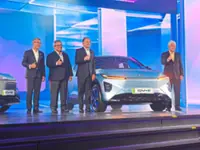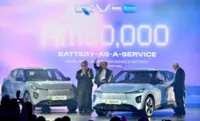(From left) Dr Govindan Kutty Rajendran Nair, Dr Sergio G. Echeverrigaray and Dr Yang Jie working in the dry room of the new advanced battery lab at NUS. — NUS/The Straits Times/ANN
SINGAPORE: A facility at the National University of Singapore (NUS) is developing batteries that should allow an electric vehicle (EV) to be fully charged in the time that it takes to pump petrol at a gas station.
Made using the metal niobium, these batteries are targeted to last a full decade longer than those powering EVs today, and possibly outlast the vehicle itself.
Already a subscriber? Log in
Save 30% OFF The Star Digital Access
Cancel anytime. Ad-free. Unlimited access with perks.





